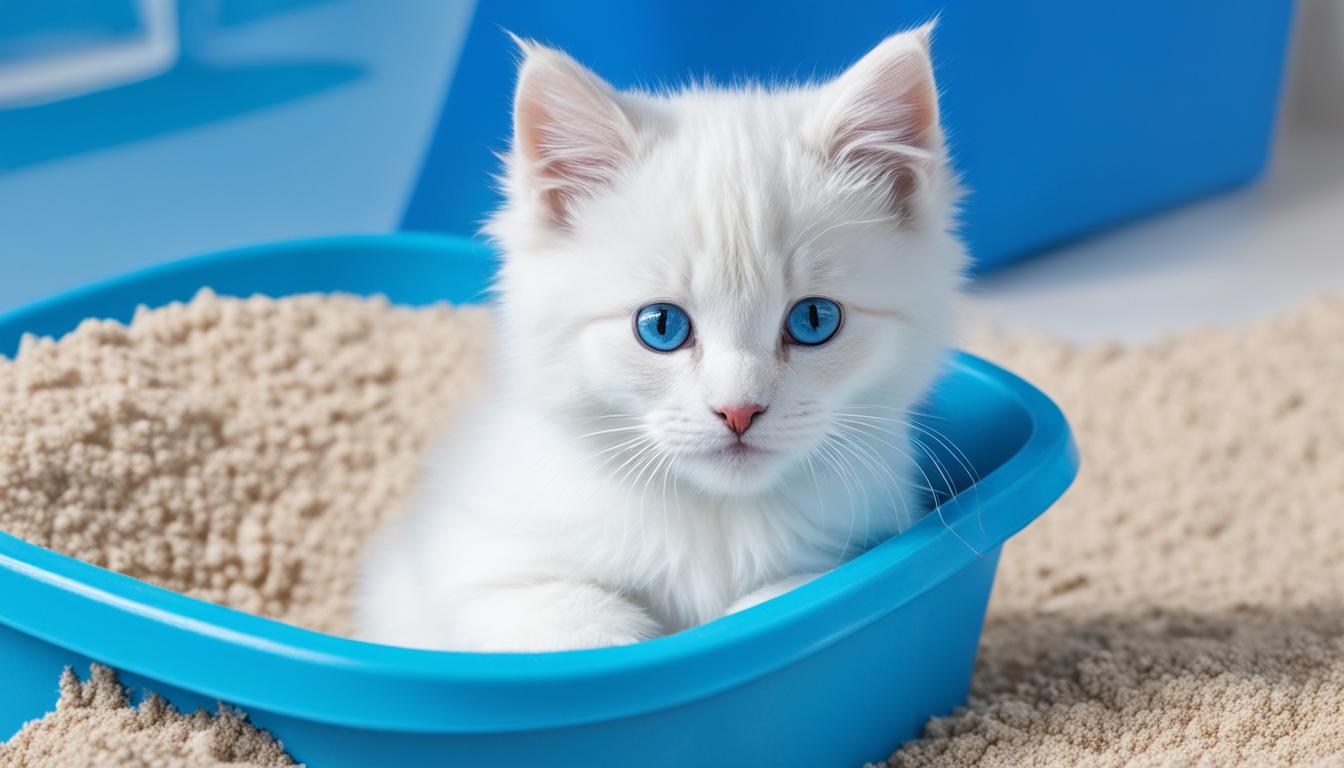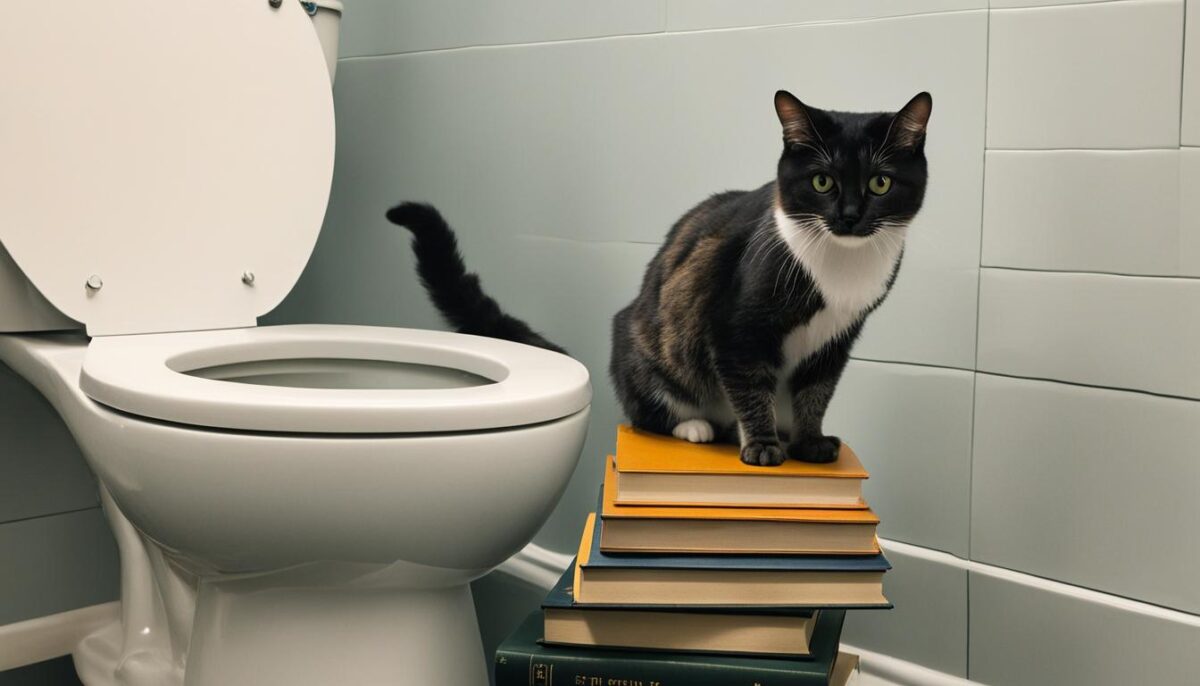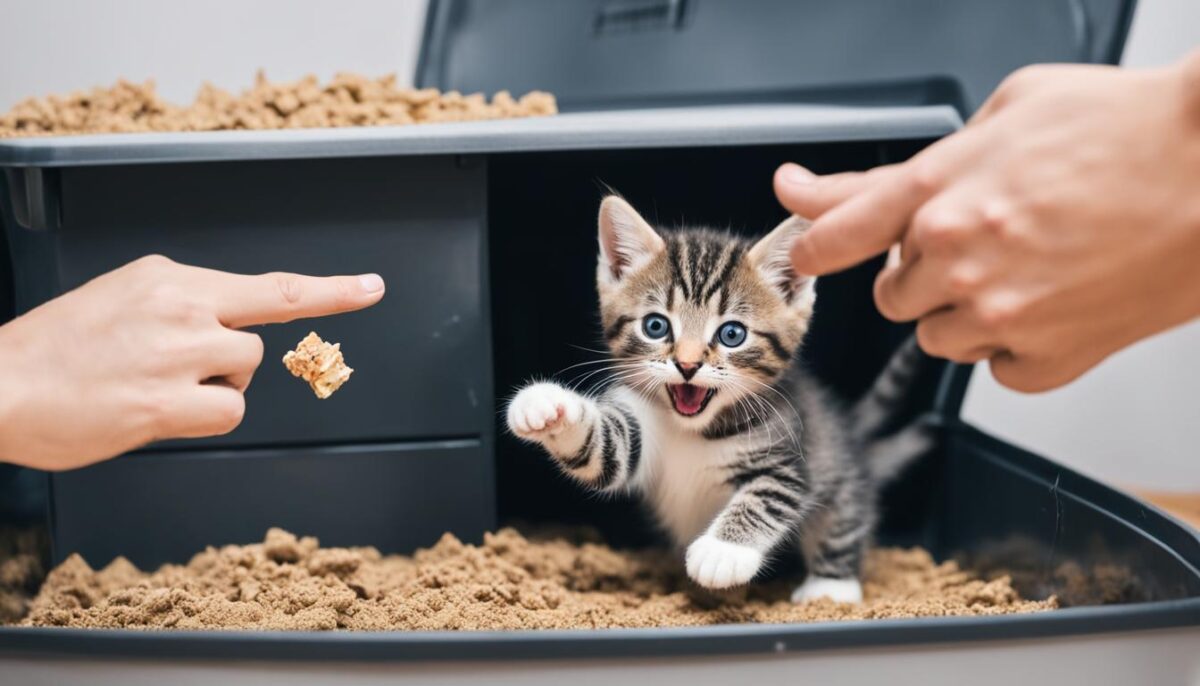Hey there! If you have a furry little friend at home, you might be wondering about cat potty training. Learning the kitten litter box habits is important for you and your kitty. Cats love clean spots for potty time, and getting this right helps a lot. Got a tiny kitten? It’s best to start when they are about four weeks old. If your cat is big, start as soon as they come home. You want to make your cat’s potty space ready with the right things so they can learn how to go.
Cats are smart with feline behavior. They like to go potty in a place that feels nice under their paws. By giving them good supplies and a steady plan, you can help them learn where to go to the bathroom. A happy cat is a cat that knows where its litter box is!
Key Takeaways
- Starting early is key for kittens and new cats.
- Get the right gear for your cat’s potty spot.
- Make sure the litter box feels good to your cat.
- Cats like a nice routine for their potty time.
- Give your cat lots of love for using the litter box right.
Getting Started with Toilet Training Your Cat
When you have a new kitten, it’s fun and exciting! But you also need to teach them how to use a litter box. Start litter training kittens as soon as they come home with you. This helps them learn where to go when they need to use the bathroom.
First, show your kitten the litter boxes around your house. Let them sniff and see what they think. It’s like saying, “Hello, here’s your bathroom!” to make them feel comfy. Then, place them gently in the box. You might need to help by moving their little paws in the sand. It’s like showing them how to dig a small hole before they go.
Remember to put your kitten in their litter box after they eat, drink, or wake up from a nap. It’s a smart way to help them know when it’s time to go. Make sure the boxes are easy to find and not hidden in far-away places. Kittens want to feel safe, not scared or trapped when they use the box.
Sometimes kittens and cats need extra comfort to feel good in their litter box. Try using things like cat potty training supplies that make nice smells for cats. These can help your kitten think, “Hey, this is a good place to be!” Also, talk to your vet if you think something else is making it hard for them to learn.
Here’s a quick checklist of what you need for your kitten’s potty training:
- A litter box they can get into easily
- Cat litter that feels soft for their paws
- Yummy treats to say “Good job!” when they use the litter box right
By doing these things, you’re helping your kitten understand where to go. They’ll be happy, and you will be too!
Choosing the Right Litter and Box for Your Cat
When picking a place for your cat to go to the bathroom, you want to make sure it’s just right. Imagine how happy your cat will be with a right size litter box and fine-grain litters. It’s like giving them a comfy bathroom, just like you’d want for yourself!
Finding the Perfect Litter Box Size
Start small for your kitten, just how Dr. Sally J. Foote suggests. A little box around 13 by 9 inches is ideal. As your kitty grows into a big cat, then you can get a bigger box. And don’t forget, if you have more than one furry friend, make sure you have extra boxes – at least one per cat, plus one more!
Exploring Types of Litter
Cats are picky with textures, and they usually love fine-grain litters that are soft to touch. Peek at what your cat likes best – is it sticky, clumpy litter or the smooth, non-clumpy type? You’ve got choices like clay, corn, or wheat. Just say no to smells that are too strong or weird, like perfumes or food, as they might make your kitty say ‘no thanks’ to the litter box.
Low-Sided Trays vs. High-Sided Boxes
Not all cats like to feel closed in, so many furry guys and gals will say yes to uncovered litter boxes. This way, they don’t feel trapped. But, you might find that some cats do like their privacy and prefer a cover. Why not try both and see which makes your cat strut with joy? Remember, they need to see where the box is, so keep it bright enough for them!
| Litter Box Type | Features | Why Cats Love It |
|---|---|---|
| Small Tray | 13×9 inches, low sides | Perfect for kittens to step in and out easily |
| Large Box | Bigger for adult cats, varied heights | Spacious for grown-up cat stretching and digging |
| Uncovered Box | No lid, easy access | Feels safe, no sneaky traps! |
| Covered Box | Lid on top, private | Some cats like to hide while taking their time |
Choosin’ the right stuff for your cat’s bathroom doesn’t have to be hard. Don’t forget, a happy cat means a happy home!
How to Toilet Train Your Cat
To teach your kitty to use the toilet instead of a litter box, you’ll need to follow a simple cat toilet training process. First, move their litter box right next to the toilet. Every few days, make the box a little higher until it’s as tall as the toilet. Then, switch to a training box for cats that fits on your toilet. Slowly make the hole in the box bigger until you don’t need the box at all. Remember to give your cat a treat when they use the toilet right! It’s important to go step by step so there are no messes or unhappy cats. If your cat doesn’t want to try it, you might put some litter in the toilet water to make it smell like their old box.
When switching from a litter box to a fancy toilet, you can use a table to keep track of steps and treats, like this:
| Step | What to Do | Treats |
|---|---|---|
| 1 | Move litter box next to toilet | Give a treat after they use it |
| 2 | Raise litter box higher over time | Extra play time as a treat |
| 3 | Switch to training box on toilet | Cuddles or their favorite treats |
| 4 | Make the hole in the box bigger | Give a treat and lots of praise |
| 5 | Take away the box when ready | Super special treat for this big step |
A training box for cats is very helpful for this. Always go one step at a time when changing from a litter box to toilet to make your kitty happy!
Praising and Rewarding for Litter Box Success
Good job, kittens! Every time your little furry friend uses the litter box the right way, it’s a big win! Giving them a treat or some cuddles right after they finish can help them know they did great. This is called positive reinforcement for kittens, and it’s like a gold star for their good work. It helps them remember to use the litter box every time.
When you’re teaching your kitten, remember that doing things the same way each time can really help. This is your cat litter box routine. Try to take your kitten to their litter box after they eat or wake up from a nap. This makes it easier for them to understand what to do.
Creating Positive Associations
Think of treats and hugs as your kitten’s favorite things. Using them to say “well done” makes your kitten happy to use the litter box. It’s like when you get a yummy cookie for being good!
Consistency is Key in Training
Doing things the same way each time, like putting kittens in their litter box at certain times, helps them learn faster. Stick to your plan, and your fur baby will start to catch on to when it’s time to go by themselves.
Dealing with Accidents Gracefully
Oops! Sometimes accidents happen, but that’s okay. Never be loud or mad at your kitten. Clean up the boo-boo with a special cleaner but don’t be upset. This helps keep everything nice and happy for your kitten’s learning.
Maintaining Your Cat’s Toilet Area
Keeping your cat’s little space tidy is a big part of having a happy pet. Litter box hygiene is not just about cleanliness; it’s about your kitty’s health too. A clean spot will make your cat want to keep using the box every time they need to go.
To make sure you’re on top of your kitty litter management, here are a few simple steps:
- Scoop Daily: Every day, you should take out any waste. This keeps the box nice and fresh.
- Replace the Litter: Add new litter when levels get low. If you use clumping litter, it’s good to change all of it every one or two weeks.
- Clean the Box: Give the litter box a deep clean often. Wash it with soap and water to keep it smelling nice.
- More Than One Box: If you have a big house, more than one box means your cat won’t have to hurry too far.
By doing these steps, you help prevent little accidents around the house and encourage your cat to keep using the box. Remember, a clean box means a happy cat and a happy you!
Develop clean litter box habits, and both you and your kitty will benefit from a spotless and odor-free home.
Conclusion
If you have been following along with our guide, you’ve seen that teaching your cat to use the litter box can take some time. Like learning any new skill, both you and your pet need to have patience. Keep being kind and steady, because this will help your furry friend feel safe and get the hang of things faster. This part of your journey together is so important for a happy, clean home.
Patience Leads to Progress
When it comes to successful cat potty training, slow and steady wins the race. Every cat learns at their own pace. Some may pick up these habits quickly, while others might take a bit longer. What’s most important is that you keep a routine and be patient. The more you practice, the better it gets. Be proud of every little step your cat takes toward becoming a litter box pro!
Consider Veterinary Insights for Difficult Cases
Sometimes, you might feel stuck. If your cat isn’t getting better at using the litter box or seems upset, it’s a good idea to talk to a vet. They give great advice for litter training and can tell if there’s a health problem. Remember, your vet is there to help you and your cat live a happy, healthy life.
Transitioning From Training to Everyday Normalcy
After your cat knows how to use the litter box all the time, make sure to keep things on track. Stick to your lifelong litter box routine to keep everything neat and clean. You’ve done a great job, and now, those early days of training will blend into your daily life. Your cat will be happy and comfortable, and that means you will be too!
FAQ
At what age should I start litter training kittens?
It’s best to start training kittens around 4 weeks of age, which is when they usually begin to wean. If you’re introducing an older cat to a new home, start as soon as they arrive.
What supplies do I need to start litter training my kitten?
For successful cat potty training, you’ll need kitten-friendly litter, a small-size litter tray for starters, and possibly pheromone diffusers to create a comforting environment.
How do I introduce my kitten to the litter box?
Show your kitten where the litter boxes are, let them sniff around, and gently place them inside. Mimic the pawing action to encourage them and repeat the introduction after meals, drinks, or naps.
What size litter box should I use for my kitten?
A small litter tray about 13 by 9 inches is ideal for kittens. You can graduate to larger boxes as your cat grows.
What type of litter do cats generally prefer?
Cats tend to prefer fine-grain litters for the softer feel. Observe your cat’s reaction to clumping or non-clumping, and various materials like clay, corn, or wheat to determine their preference.
Is it better to have a covered or uncovered litter box?
Many cats prefer an uncovered box, but some might like the privacy of a covered one. Offer both options to see which your cat prefers, and ensure there’s adequate light for them to see the box.
How can I transition my cat from a litter box to using the toilet?
Gradually move the litter box closer to the toilet, raise its height, transition to a training box on the toilet, and then increase the size of the hole. Always reward your cat for successful toilet use and be patient with the process.
What’s the importance of positive reinforcement in litter training?
Offering treats and praise after successful litter box use helps to strengthen good habits and creates positive associations with the activity.
How can I establish a consistent routine for my kitten’s potty training?
Consistency is key. Place your kitten in the litter box after meals or naps routinely to reinforce their training habits.
What should I do if my kitten has an accident?
Don’t punish or yell; cats don’t respond well to negative reinforcement. Clean up any accidents with an enzymatic cleaner and maintain a positive attitude to continue the learning experience.
How often should I clean my cat’s litter box?
Scoop waste promptly and refresh with clean litter as needed. For clumping litter, a complete change every week or two is recommended, while non-clump types may require less frequent changes. Regularly deep clean the litter box to maintain hygiene.
What should I do if my cat is not using the litter box consistently?
Consult a veterinarian for persistent issues. They may indicate underlying health concerns or stress that need to be addressed.
After my cat is trained, how do I maintain the litter box routine?
Continue the good habits you’ve established, keep the litter box clean, and ensure it remains a comfortable and welcoming space for your cat to ensure lifelong success.


